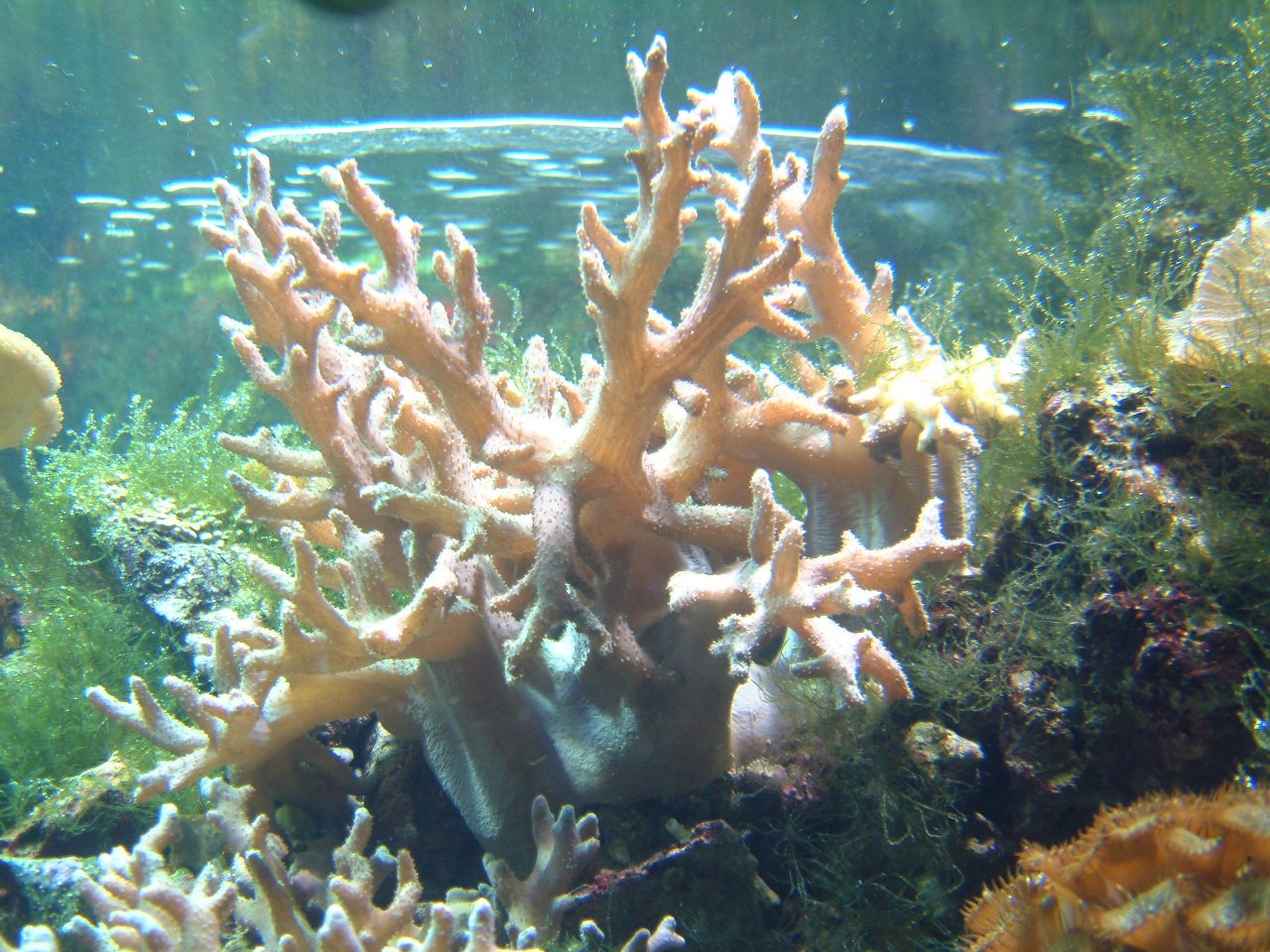
Coral is often mistaken for a colourful plant that sits at the bottom of the ocean, but it is in fact an animal! This complex and beautiful creature plays a major role in marine life, not to mention fighting an ever-growing threat to its existence. Living for hundreds of years, coral (Anthozoa) is closely related to other popular sea creatures including jellyfish and anemones.
So, if you’re hoping to learn a little more about coral or want to see them for yourselves, our Coral Cave exhibit is where you need to be! For now, let’s uncover some of the key facts about coral and what impact they have on our oceans.
What exactly is coral?
Coral is made up of lots of tiny polyps. A polyp is a soft-bodied organism, shaped like a cylinder with a mouth at one end and surrounded by tentacles. At the base of each polyp there is a hard base called a calicle.
Coral polyps can live on their own, but often live in close proximity to form a colony – this allows them to share resources and grow larger. When a large colony forms, this creates what we know as a coral reef. However, it’s important to note that only some coral are known as reef-building corals – these species will produce a harder outer skeleton made of calcium carbonate, which gives coral its rocky appearance and is often why it’s mistaken for a plant.
With over 6,000 species of coral, they all differ slightly in appearance. For example, staghorn coral (Acropora cervicornis) has a branching structure that can reach up to 2 metres in length, while lettuce leaf coral (Agaricia tenuifolia) has fronds with ruffled edges.
Where do coral live?
Coral can be found in all the oceans across the world. Different species live in different environments – some will thrive in colder, deeper waters while others need a more tropical home. Corals originating in tropical climates typically live no deeper than 60 metres from the surface. This is because of the zooxanthellae algae that live in the coral’s tissue, which needs sunlight in order to photosynthesise.
The biggest coral reef is, of course, the Great Barrier Reef off the coast of Australia. You can also find coral reefs around Indonesia and the Philippines.
Why is coral so important in our oceans?
Coral reefs are some of the most complex ecosystems in the sea, with coral serving a number of purposes. Coral provides habitats for much of marine life, with fish, reptiles and other creatures calling a coral reef home. They are often known as the rainforest of the sea, thanks to its biodiversity.
Coral have a symbiotic relationship with other sea creatures, which means both parties benefit. For example, coral provides protection to the zooxanthellae algae living in its tissue, and in return the coral gets its energy through the algae’s photosynthesis.
However, coral also offers benefits for people on land too. Coral reefs can provide important protection from storms, serving as a barrier for the impact of large waves that might reach the shore. People around the world rely on the fish caught around coral reefs too, not to mention tourism for local economies from people wanting to visit the reefs.
Where can you discover coral?
While coral can be found across the oceans of the world, you can find corals up close and personal right here at Blue Planet Aquarium! Our Coral Cave exhibit is the main tropical display, with a vivid showcase of colours. We’ve designed it to mimic the reefs found across the Indo-Pacific oceans, so you can experience it for yourself.
Fun facts about coral
Corals are truly fascinating, with a few fun facts that you might be interested to know…
- Corals first appeared over 500 million years ago! They have been found in fossil reefs as old as this, which means they were around during the time of the dinosaurs.
- Most coral reefs you see today started growing over 50 million years ago.
- Corals are actually translucent – they get their bright colours from the zooxanthellae algae that live within them!
- When corals are stressed due to environmental change, they expel the algae which is why the coral turns white – this is known as coral bleaching.
- Coral support around 25% of marine life, but it only covers less than 1% of the ocean floor!
Type
Invertebrate
What do they eat?
Zooplankton, Fish Larvae and some are photosynthetic
Size
From 1mm – 30cm
Water Type
Marine
Where are we?
Pacific Ocean, the Indian Ocean, the Caribbean Sea, the Red Sea, and the Persian Gulf.
